In a melting Iceland, drilling deep to stem climate change
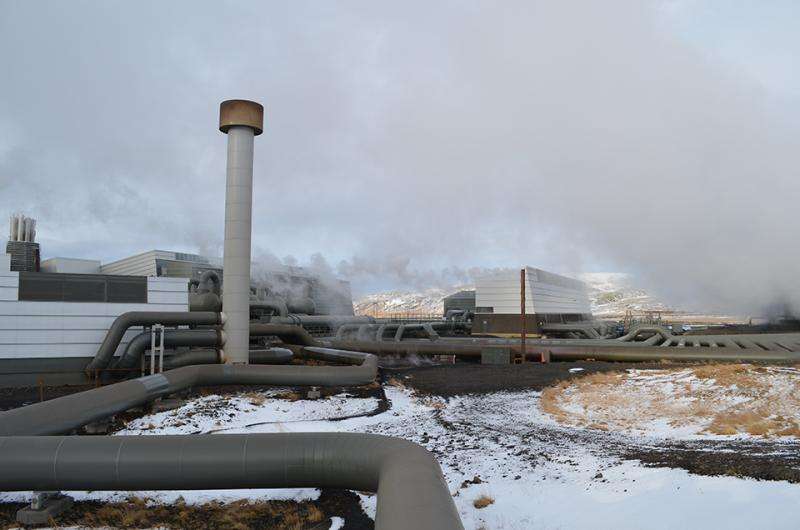
Tiny Iceland is a prime exemplar of the complexities wrought by warming climate. It is 11 percent covered by ice, but it is basically also one very large, very active volcanic system. The island has seen fast-increasing temperatures since the 1970s, and glaciers–a big source of tourism and runoff for hydropower–are visibly receding.
This cuts various ways. Iceland gets almost all its electricity and heat from hydropower and geothermal wells. Increased glacial runoff means increased generation potential; on the other hand, in 50 or 100 years, Iceland may be mostly land and very little ice, and the runoff could dry up. (And, as ice melts, pressure exerted on many of the 200 volcanoes declines, and some scientists believe that this could uncork more destructive eruptions.) For the time being, the country's 325,000 residents have more renewable energy than they can use, and there is a controversial proposal to extend a $2.1 billion undersea extension cord some 1,100 miles to Europe to sell the excess.
On the definite upside: Warmer weather is giving farmers in arable coastal areas better crops, and commercial fish stocks once confined farther south are moving into Icelandic waters. This spring, prime minister Sigmundur David Gunnlaugsson said climate change may open "great opportunities" for Iceland. Recently, a Chinese tycoon even offered to buy a huge tract on the desolate northern coast, suggesting it could one day become a golf resort. (Or, as some skeptical Icelanders fear, a Chinese-controlled shipping station convenient to the nearby fast-melting Arctic Ocean.)
In any case, just outside the capital city of Reyjavik, Iceland is pioneering a new technology to deal with climate change. Its Hellisheidi geothermal power plant, the world's largest, hosts arguably the world's most advanced program to capture and lock away globe-warming carbon dioxide. The CarbFix project, run by the Reykjavik Energy company, captures CO2 emitted by the plant and pumps it underground. There, ongoing research has showed, natural chemical reactions are converting it to a solid mineral similar to limestone in just months. The process differs from most of the other nascent underground storage schemes, in that it obviates concerns that the CO2 could eventually leak back to the air. If the technology proves up, it could be exported to other, much larger industrial nations.
At Hellisheidi and similar plants, engineers drill into still-hot volcanic basalt to bring up superheated steam that drives turbines and heat exchangers. (Near Hellisheidi, a lava flow displaced Viking settlers 1,000 years ago, leaving a surface plain of basalt that is still raw and jagged today, and plenty of residual heat a few thousand feet down.) Hellisheidi and a companion plant produce all of Reykjavik's electricity, space heating and bathing water, plus cheap power for smelting aluminum ore transported from overseas. Geothermal is supposedly clean–but not completely. In addition to steam, the process vents natural volcanic gases–mainly carbon dioxide, along with powerful whiffs of corrosive, noxious-smelling hydrogen sulfide. Hellisheidi produces about 40,000 tons of CO2 a year–just 5 percent the emissions of an equivalent coal-fired plant–but enough to be worrisome, and there will be more if Iceland radically expands geothermal production so it can export electricity. The idea is controversial because many Icelanders fear more power plants will disfigure the landscape and generate jobs overseas, not at home. Furthermore, the industrial processes at the aluminum smelters that Hellisheidi powers generate substantial carbon emissions. Nothing is free.
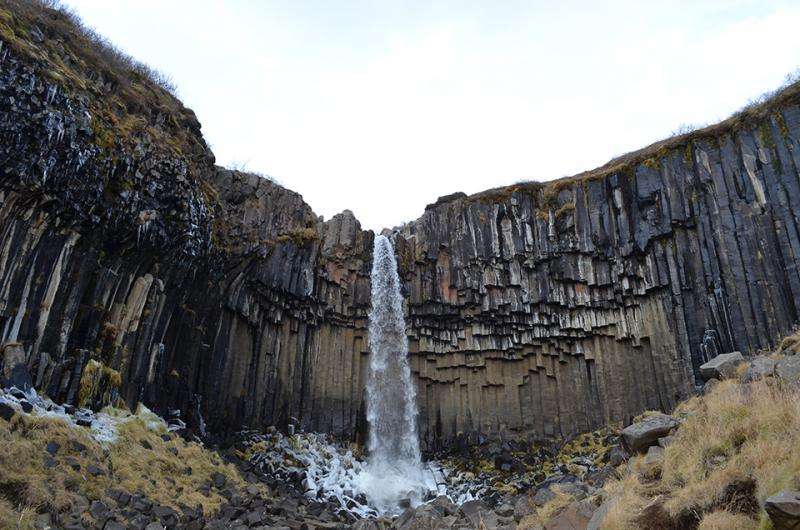
Carbfix grew out of a 2005 global roundtable on climate change sponsored by Columbia University's Earth Institute, which brought together, among many others, Icelandic president Olafur Ragnar Grimsson and Earth Institute director Jeffrey Sachs. Geochemists at the Earth Institute's Lamont-Doherty Earth Observatory were already experimenting with how carbon might be trapped in basalt (which also underlies Lamont itself). Subsequent exchanges culminated in a 2007 agreement to test the idea at Hellisheidi, with collaboration from the University of Iceland and France's University of Toulouse. Reykjavik Energy has paid for infrastructure and engineering, while the Earth Institute provided initial funds for study, and later brought in a $1.5 million grant from the U.S. Department of Energy. The University of Copenhagen and other collaborators have since joined, with funding from the European Community.
"We need to deal with rising carbon emissions, and this is the ultimate permanent storage–to turn them back into stone," said Juerg Matter, one of the project leaders, Matter ran some of the original experiments at Lamont while working with other geochemists there. (He recently moved to the United Kingdom's University of Southampton, but remains a Lamont adjunct).
The project is made possible by the chemical properties of basalt, which undergirds 90 percent of Iceland. Basalt is naturally highly reactive with CO2; when the two meet, they undergo a series of exchanges that culminate with the carbon precipitating out as a solid whitish substance, similar to limestone. Scientists at Columbia and elsewhere have shown that the process happens slowly underground, over thousands of years, as basalt cools and reacts with groundwater. It may also happen much more rapidly at the surface. Following the 2010 eruption of Iceland's Eyjafjallajokull volcano, parts of the nearby Hvanna River turned milky as CO2 and other substances poured out, and dramatic terraces of solid carbonate formed almost instantly. The scientists are essentially trying to do the same thing underground by pumping in unnaturally large amounts of CO2 combined with water. The method could be applied in many places, because 10 percent of the world's continental rocks are made of basalt, and the ocean floors are almost entirely made of it. Lamont researchers have in the past 10 years been looking into ways to exploit this idea, including off the U.S. East Coast. They are involved in a similar project in southeastern Washington state run by the U.S. Department of Energy, but so far that one is not as far along. Matter and Lamont geochemist Peter Kelemen are also working on a separate project to harness similar chemical reactions in a different kind of rock, peridotite, in the Mideast nation of Oman.
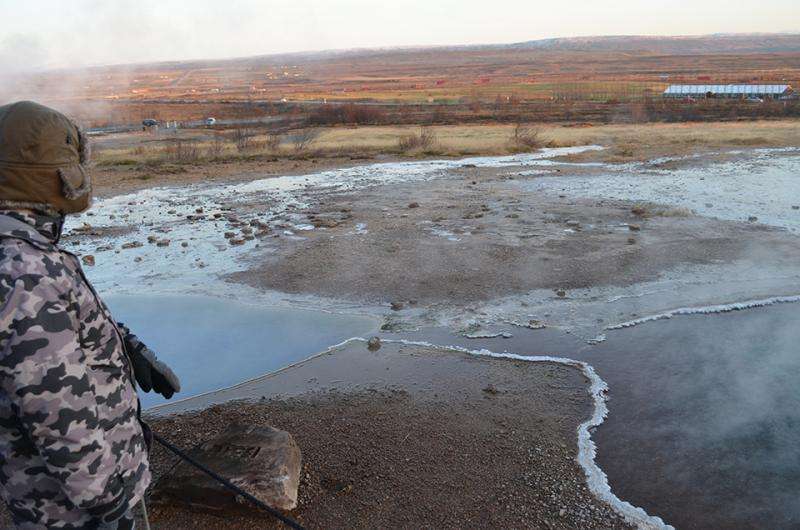
In 2012-13, the team did a pilot injection near the power plant, sending some 250 tons of CO2, along with water, down into porous basalt formations 400 to 800 meters below. They initially studied the results by withdrawing water from monitoring wells drilled into the injection zones, and, using methods developed at Columbia, analyzed the water's chemistry to measure how rapidly the carbon was being absorbed. The indicators exceeded the most optimistic projections: within a year, about 85 percent of the carbon injected had apparently been locked away, essentially forever. The injection was stopped only when it looked like precipitated-out minerals were starting to clog the system.
This October, the team, including Lamont hydrologist Martin Stute, oversaw two weeks of drilling at the pilot site that brought up cores of rock from the injection zone to confirm the results and study details that may allow them to understand the process more fully and make it more efficient. It took the drillers several days in the already bitter cold to reach the injection zone. But soon after they did, they started bringing up cylinders of blackish rock from 400-plus meters showing telltale streaks of white–the apparent end product of reactions that had indeed converted the CO2 into a solid carbonate. When cracked open, some cores also showed streaks of red and green–possible byproducts of underground microbes undergoing a population boom as they feed off the pumped-down waste. A team of microbiologists from the Paris Institute of Earth Physics was scraping off samples of these biofilms as fresh cores emerged, to study the largely unidentified organisms, and determine what, if any, role they play in the precipitation process. "They may be very important," said team leader Benedicte Menez. "They maybe help things to go faster, but we just don't know yet."
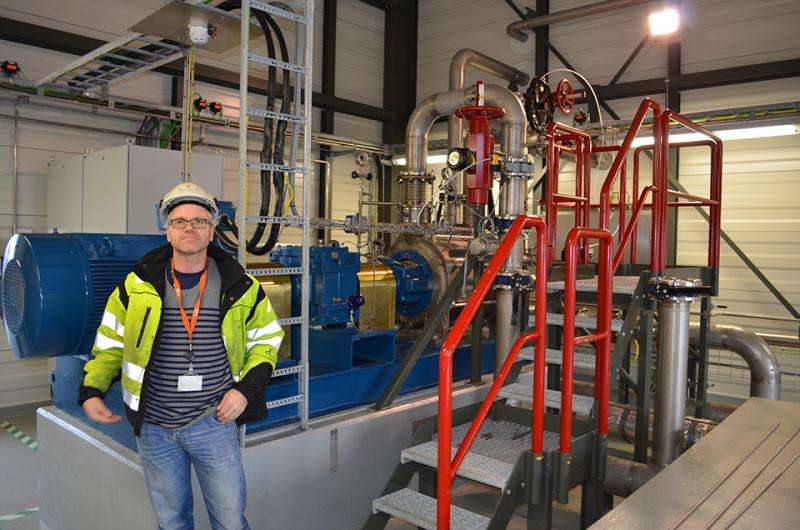
This year, Reykjavik Energy scaled up the process, constructing an annex to the plant that can separate out 5,000 tons of CO2 a year from vent gases. The apparatus, which started up in September, also removes hydrogen sulfide–an immediate benefit, because the smelly gas was plaguing Reykjavik, and the government demanded the company get rid of it, said chemist Edda Sif Arradotir, manager of the project for Reykjavik Energy. The separated-out gases are dissolved in water, then piped to a distant injection well, which plunges into much deeper, hotter rocks than at the earlier, experimental one–700 to 1,300 meters. Here, the team believes the solidification process is proceeding even faster, driven by temperatures up to 270 degrees C (about 520 degrees F). Evaluation of the new site will take place in 2015. "Eventually, the aim is to keep expanding until we capture all the gases," said Aradottir. Matter estimates the process may reach full industrial scale that can be transferred to other sites in about five years.
a dozen working carbon-sequestration projects underway worldwide, and they all lose money. A big operation that opened in the Canadian province of Saskatchewan in October 2014 is heavily subsidized by government; and, its CO2 ends up not as a mineral, but is pumped into nearby oil fields to pressure out more oil, which in turn produces more greenhouse gases. It costs Reykjavik Energy $55 to $112 to separate each ton of gas. Injecting it is another $17 to $30 per ton. But it is economically doable here for several reasons, said Aradottir. For one, emissions are low to begin with, so there is far less CO2 to filter out per unit of energy than at a fossil-fuel plant. Second, due to growing government regulation of hydrogen sulfide emissions, the company had to build a separation plant anyway; pulling out the CO2 came as something of a bonus. "If you look at other projects worldwide, the ones that are successful have some kind of added value like this–otherwise it's hard to justify," she said. Matter says that costs will come down as the process is scaled up, and bugs are worked out. "From a science and engineering point of view, we're way beyond the first-generation system–we're ready to move on and improve," he said. "What's more lacking is for policymakers to address climate mitigation and provide an economic model that helps us move forward."
-
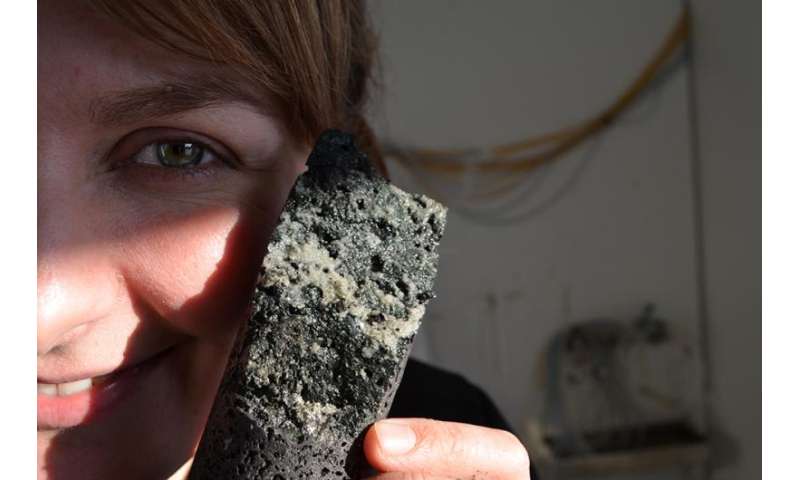
The prize of the day: University of Iceland geologist Sandra Snaebjornsdottir displays a core of porous basalt heavily laced with carbonate minerals—tangible evidence of the process at work. -
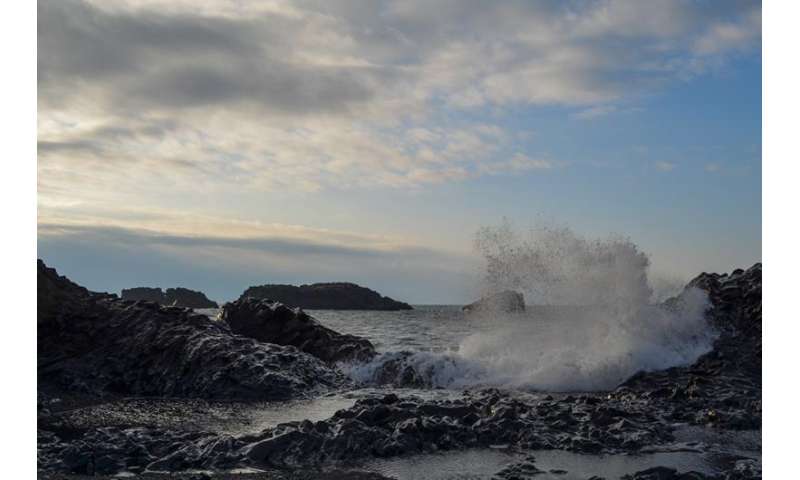
Other possible upsides to global warming: commercial fish stocks that used to stay farther south are moving up. And, foreign investors are showing interest in real estate on the island’s rocky shores, which offer a gateway to the Arctic Ocean.
More information: "Carbon Storage in Basalt" Science 25 April 2014: Vol. 344 no. 6182 pp. 373-374 DOI: 10.1126/science.1250828
Journal information: Science
Provided by Columbia University


















